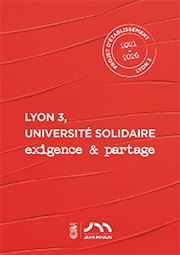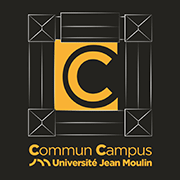AccueilRechercheLes productions scientifiquesThèsesThèses soutenuesThèses soutenues - 2006-2020Thèses soutenues - 2010
-
Partager cette page
- Recherche,
BONZANI Stéphane
La ligne d'édifier. Invention architecturale et transmilieux.
Thèse en Philosophie Soutenue le 22 septembre 2010
Que veut dire inventer en architecture ? Cette vieille question se trouve reposée aujourd'hui avec insistance. En effet, les conditions contemporaines de l'habitation humaine caractérisées par une forme d'épuisement du dehors ont profondément bouleversé les modalités de cette activité. Fondée, dans la pensée occidentale du moins, sur un mouvement d'expansion, la constitution de milieux habités trouvait son sens dans la tension du rapport inquiet mais fertile à l'étrangeté radicale de l'extériorité.
Afin d'analyser cette mutation, nous cherchons d'abord à saisir la profonde originalité de l'invention architecturale désignée comme « ligne d'édifier ». Son mouvement rythmique n'est ni celui de la découverte, ni celui de la création, mais procède plutôt par ouverture ou instauration d'un milieu habitable. Cette définition permet ensuite de revisiter quelques grands textes fondamentaux de l'histoire de l'architecture (Vitruve, Alberti, Ledoux, Le Corbusier). Interrogés à partir de l'hypothèse d'un effacement progressif de l'extériorité à l'empire humain, ces écrits laissent percevoir comment la ligne d'édifier, cette ligne du monde, s'infléchit jusqu'à éprouver une situation limite : le bouclage.
La dernière partie de la recherche explore plus directement la situation contemporaine et les pistes émergentes permettant de sortir de l'épuisement. L'hypothèse de réponse, basée sur la puissance régénérative de l'invention architecturale par la reliance, invite à élaborer le concept de transmilieu(x). Dépassant les frontières entre les échelles, les disciplines, et entre nature et culture, ce concept pourrait constituer le point de départ d'une autre pensée de l'architecture.
Mots-clefs : - Invention - Architecture - Philosophie - Milieu habité - Transmilieux
- Ligne - Edifier - Alberti
What does inventing mean in architecture? This ages-old question is being strongly reevaluated nowadays. Indeed, the contemporary conditions of human habitat, characterized by the outside being exhausted, have considerably changed this activity. Architectural invention has always been based, in Western thought at least, on a spreading movement. The conception of inhabited milieu has been dealing with the worrying but bountiful relationship with the strange exterior forces.
In order to report on this metamorphosis, we have tried to define the profound originality of architectural invention as "the building line". Its rhythmic movement is neither that of discovery, nor that of creation, but rather proceeds by opening or establishing a livable environment. This definition then allows some of the great texts from the history of architecture (Vitruvius, Alberti, Ledoux, Le Corbusier) to be analyzed in a new way. Questions arise from the hypothesis of progressive disappearance of the exterior from the human empire. The analysis shows how the building line continues in parallel to the progressive loss of the exterior, bending until it turns back on itself, leading to a critical situation (the bouclage).
The last part of the thesis investigates the contemporary age in more detail and aims to identify the emergent perspectives trying to escape from this situation. The answer is based on the regenerative power of architecture through interlinking (reliance), and it leads on develop the concept of transmilieu(x). The concept travels beyond the frontiers between scales, disciplines, nature and culture, and could be the starting point of another way of thinking in architecture.
Key words : - Invention - Architecture - Philosophy - Inhabited milieu - Transmilieux - Line - Building - Alberti
Directeur de thèse : Chris Younes
Membres du jury :
- M. Thierry PAQUOT, Professeur, Université Paris 12
- M. Benoit GOETZ, Professeur, Université de Metz
- M. Jean-Jacques WUNENBURGER, Professeur, Université Jean Moulin Lyon 3
- M. François GUERY, Professeur émérite, Université Jean Moulin Lyon 3
- M. Frédéric BONNET, Maître assistant, Ecole Normale d'Architecture de Paris Belleville
- Mme Chris YOUNES, Professeur, Ecole Nationale Supérieure d'architecture de Paris la Vilette
Mention : Très honorable
Equpe d'accueil : Institut de Recherches Philosophiques de Lyon



